What Can I Give My Cat to Improve His Coat?

As a cat owner, you might have noticed that your feline friend’s fur isn’t as shiny and thick as it once was. What Can you give your cat to improve his coat?
Perhaps there are white flakes on your cat’s skin, or their fur is dull and seems to be falling out. In many cases, these issues can be traced back to your cat’s diet.
In this article, we’ll discuss what a cat’s diet needs to contribute to healthy skin and fur. We’ll also provide some symptoms that may signal coat issues, discuss the best ingredients for healthy skin, and recommend some excellent cat foods that incorporate them.
Why It’s So Important for Your Cat To Have a Healthy Coat

Your cat’s coat is more important to their overall health than you might think. Their skin is the body’s largest organ and is a critical defense mechanism for maintaining your cat’s health.
Similarly, fur also plays several roles, such as keeping your cat warm, collecting sensory data about the world around them, and helping them communicate (think about a cat’s hackles rising when it feels threatened).
Moreover, if your cat is experiencing issues like fur loss or itchiness, it could be a sign of an underlying health condition. For more information on this, you can check our article on 21 warning signs your cat is crying for help.
Signs of a Poor Coat
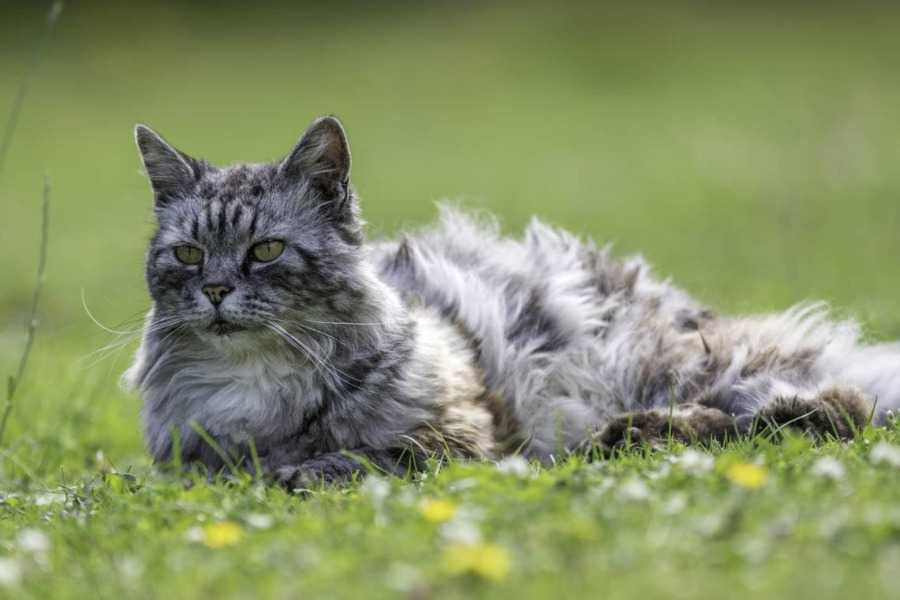
How can you tell if your cat’s coat is in poor condition? Here are a few of the biggest red flags for cat owners:
Dandruff: If you notice white flakes on your cat’s fur, skin, or bedding, your cat may have dandruff. Cat dandruff is most noticeable around your cat’s back or the base of their tail. Often, this dandruff is harmless. But sometimes, it can escalate into other symptoms, including red, inflamed skin, itching, and greasy fur.
Fur Loss or Thinning: Another sign of a poor coat is fur loss or thinning. You may see isolated bald patches or notice that you can see your cat’s skin through their coat without separating the fur. To get the hair to grow back, you need to address the underlying cause of the hair loss.
Dryness or Loss of Shine: Your cat’s fur may not look as bright and shiny as usual. Dry skin can show up in cats as bald spots, scabs, or scaly patches, most often found around the nose, tail, lower back, and ears. Excess scratching could also signal dry skin.
Itchiness: All cats get an itch once in a while. But if your cat is scratching itself much more than usual, this could be a sign of poor coat condition — and too much itching will only increase the irritation in the skin, making things even worse.
What Causes a Poor Coat Condition in Cats?
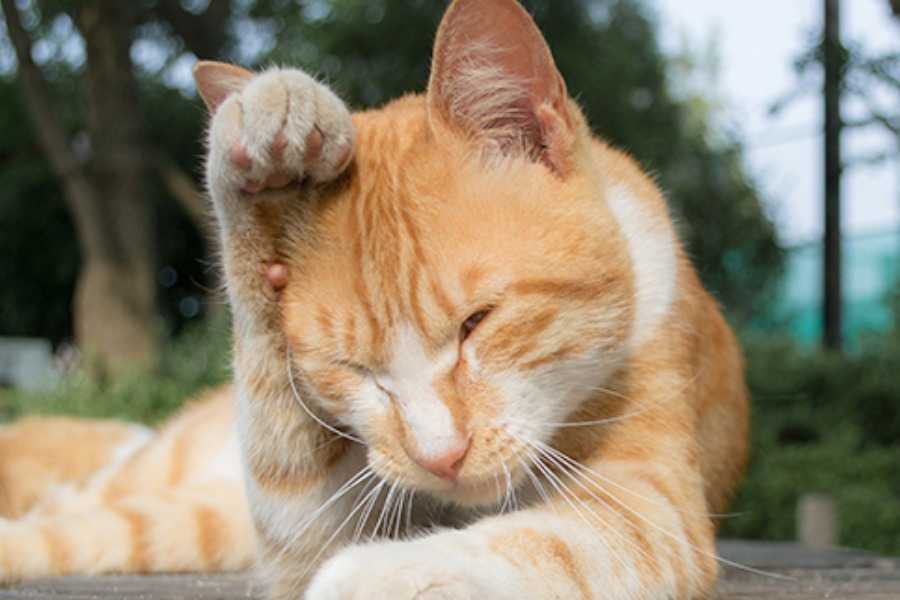
Several factors contribute to maintaining your cat’s healthy coat. When one or more of these things slip, the quality of your cat’s coat can suffer as a result.
Low-Fat Diets: A low-fat diet can harm your cat’s coat. Omega-3 and omega-6 fatty acids are two high-fat nutrients that protect the skin and coat. Choosing a balanced diet with more fat may help improve the coat.
Poor Nutrition: If your cat’s diet isn’t well-balanced or lacks certain nutrients, this can be a big cause of issues like dandruff, fur loss or thinning, and dry skin.
Allergies: Like humans, some cats are allergic to certain foods or food groups, like dairy or milk. These allergies can cause hair loss or thinning hair if the cat continues to consume the food. Skin itchiness on the face, ears, front legs, paws, and around the anus is a common sign of a food allergy in both dogs and cats. For more information on this, you can read our article on why my cat has bad breath: causes and remedies.
Bathing Too Often: If you really need to bathe your cat, you can. But in most cases, there’s no need: Cats maintain their coats on their own, so let them groom and bathe themselves. They’ll remove surface bacteria from their fur while maintaining the essential oils needed for a healthy coat.
Parasites: Parasites such as fleas, ticks, and worms can be detrimental to a cat’s coat. Bald patches or a dull, poor coat can be a sign that a parasite has taken up residence in your cat.
Overweight: Being overweight is another factor that can negatively impact a cat’s coat. Even moderately overweight cats can’t reach certain areas of their body to groom. If a cat cannot groom themselves like usual, their coat will take a major hit.
Anxiety Disorders: A cat struggling with anxiety might pull out the hair in their coat or groom excessively. Cats that are stressed may obsessively lick and scratch, losing hair as a result.
Best Cat Food Ingredients for a Healthy Coat

Your cat needs several vitamins and nutrients in their food to maintain a healthy coat. Here are some of the most important cat food ingredients that you can find in wet, canned cat foods or dry kibble that will help support a healthy coat (and will please even the most sensitive stomachs).
Vitamin A: Vitamin A is essential for cats’ immune health and immune response. While some animals, like dogs, can produce vitamin A on their own, cats cannot — they can only obtain this crucial vitamin through their food. Raw liver is a cat food ingredient that contains vitamin A.
Vitamin E: Vitamin E is also important for your cat’s skin coat and its immune health. In fact, some veterinarians will even recommend a vitamin E topical oil to treat your cat’s eczema or other skin issues. Your cat can get vitamin E from seed oils and vegetable oils.
Vitamin B: B vitamins include thiamine (B1), riboflavin (b2), and folic acid (B9). Vitamin B12, or cobalamin, supports your cat’s immune system, which supports their skin. B vitamins are found in a variety of sources for cats, including chicken, salmon, tuna, and eggs.
Omega-3 and Omega-6 Fatty Acids: Omega-3 fatty acids, which cats cannot produce on their own, are vital for immune system fitness. These commonly come from sources like flaxseed and fish oil. Omega-6 fatty acids can be found in wild-caught fish. These fatty acids go straight to your cat’s cellular membranes, and contribute to their strength, function, and structure, playing a significant role in skin health.
Zinc: Like Vitamins E and A, your cat needs zinc for the immune health of its skin coat. Zinc helps with DNA synthesis, growth, wound healing, and immune function. Cats don’t make zinc in their body — like vitamin A, they need to get it from the food they eat. Both red meat and poultry (like chicken) are good sources of zinc.
Biotin: Biotin (vitamin B7) helps metabolize the rest of your cat’s diet. Biotin supplements are often advertised as a treatment for dry skin or itchiness in cats (similar to the biotin hair, skin, and nail supplements touted for humans). Lean meats and eggs contain biotin.
Copper: Copper is a mineral that helps promote skin and coat health in cats. If your cat is deficient in copper, they will exhibit a dull coat with patches of hair loss all over their body. Liver and fish are two sources of copper for cats.
6 Best Cat Food Options For A Healthy Coat
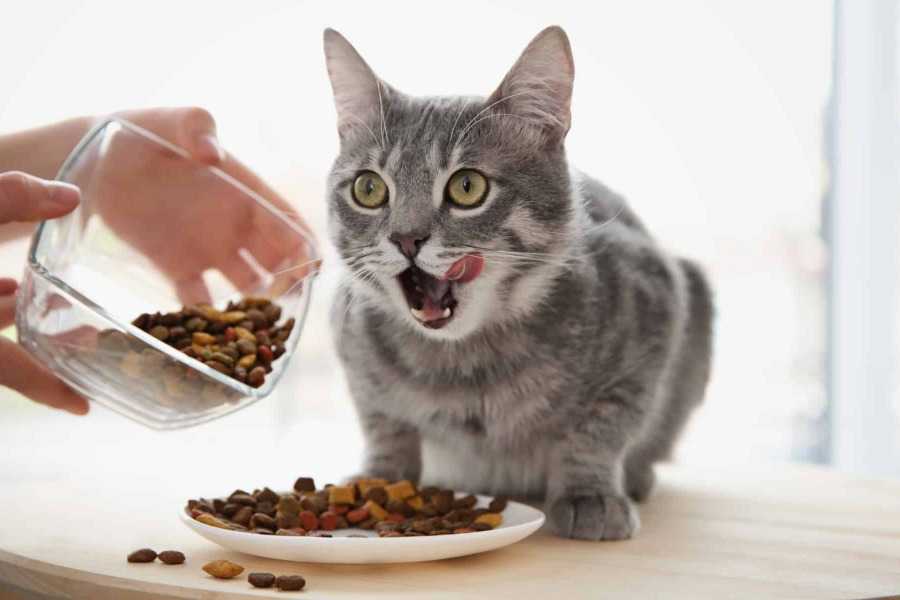
Here are six of the best cat foods that can help your cat’s skin and coat glow with health:
Minced Chicken in Bone Broth Gravy: This 100% human-grade recipe contains savory chicken and gravy, vitamin E, vitamin A, B vitamins, zinc, and other nutrients your cat needs to maintain a healthy coat.
Grain-Free Chicken & Whitefish Clusters: Full of protein, whole foods, and a boost of probiotics to help support digestion, this recipe is the first-ever 100% human-grade dry cat food.
Minced Salmon & Cod in Fish Broth Gravy: Fish, especially salmon, is an excellent source of omega-3 and omega-6 fatty acids. This recipe combines two kinds of fish with other delicious real ingredients packed with nutrients.
Smittens White Fish Cat Treats: With just two ingredients (whitefish and salt), your cat will get the protein and omega-3 they need.
Dehydrated Grain-Free Chicken & Fish: This dehydrated cat food contains free-range chicken, wild-caught fish, and nutritious, flavorful bone broth. Simply add warm water to rehydrate, mix, and serve.
Grain-Free Salmon & Cod Câté (Pâté): This wet cat food contains vitamin E, vitamin A, B vitamins, omega-3, omega-6, and more. It’s a lower-fat option than other foods on this list, and it doesn’t contain any grain, fillers, or GMO ingredients.
How Human-Grade Cat Food Can Boost Your Cat’s Health
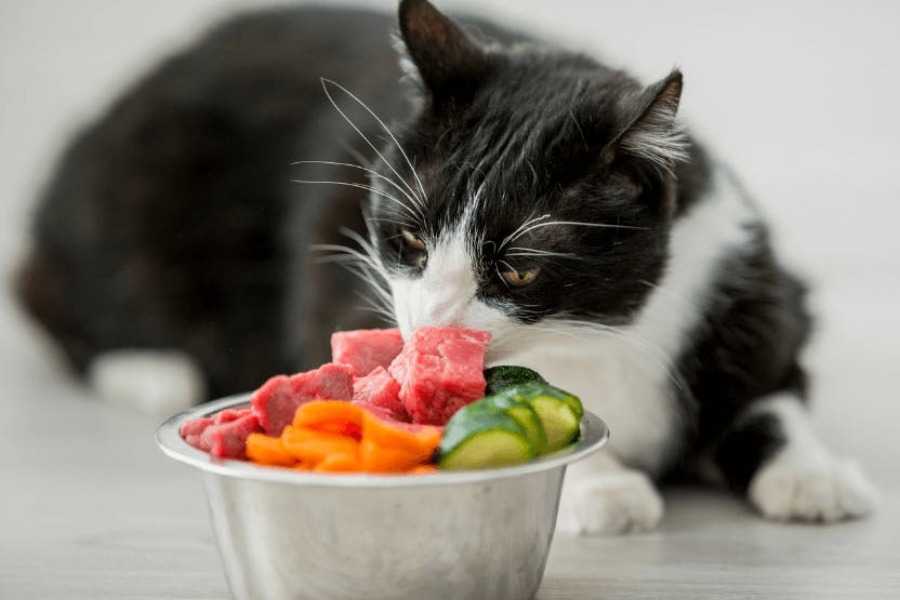
Human-grade cat food is manufactured the same way as food for human consumption. It meets the same list of strict regulations set by the FDA and USDA as healthy people foods, all the way from sourcing and production, to the finished product that arrives on your doorstep.
High-quality ingredients, including fruit, vegetables, and high-quality animal protein sources like organ and muscle meat, are used — no low-quality byproducts like chicken meal are included. Each batch of food is also tested to make sure it doesn’t contain pathogens like E. coli, salmonella, and listeria.
Additional Tips for Helping Your Cat Maintain a Healthy Coat
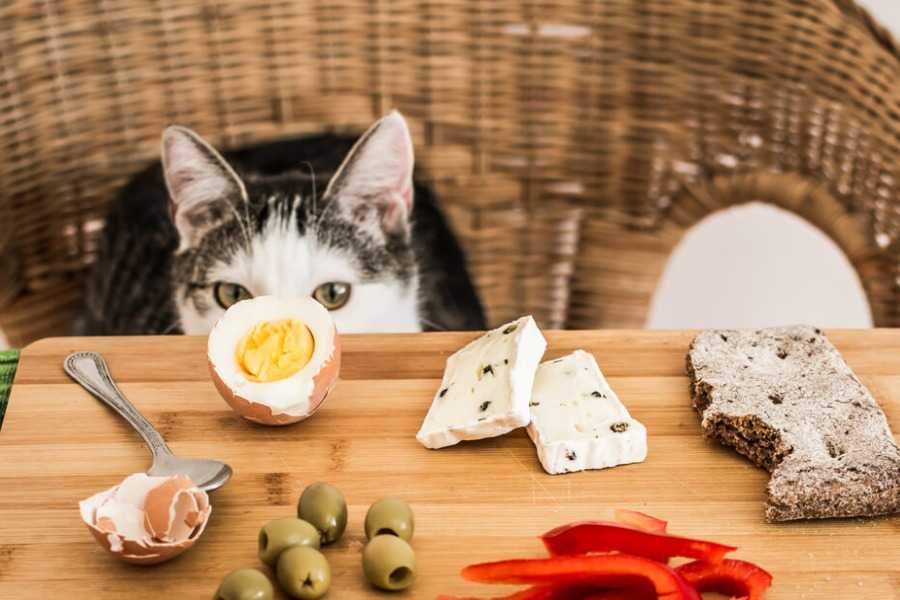
Your cat’s diet is massively important for skin and coat health, but here are a few other helpful tips to keep your cat’s coat healthy:
Avoid Over-Brushing: Only brush your cat if they’re a longhaired breed. Breeds with medium to long fur typically need help with grooming because their fur can form mats. However, if you have a short-haired breed, you don’t need to brush your cat at all.
Provide Environmental Stimulation: Mental stimulation (interesting things to see, smell, hear, and experience) can also translate into a healthier coat. Cats aren’t meant to be locked up indoors. While a life spent inside your house might keep them physically safe, cats will mentally benefit from watching birds and experiencing the sounds and smells of the outdoors.
Use Parasite Preventatives: Even indoor-only cats can experience flea infestations or be affected by other tiny parasites — and these small creatures can significantly damage your cat’s fur and skin. Make sure your cat is on the correct schedule of parasite preventatives. This typically includes flea, tick, and heartworm preventatives, but ask your vet for specifics.
In conclusion, your cat’s skin health is important. Make sure they have a shiny coat by choosing human-grade cat food with quality ingredients and protein sources — without the fillers, preservatives, and artificial colors, and artificial flavors.
Remember, you are helping pet owners make the best decisions for their pets while subtly promoting affiliate products. Your content should be as enjoyable as it is useful, making readers feel confident in the information you provide and the products you recommend. For more information on cat health and care, visit PawsAdviser.
Tags
Share
Table Of Contents
Related Posts
Quick Links

